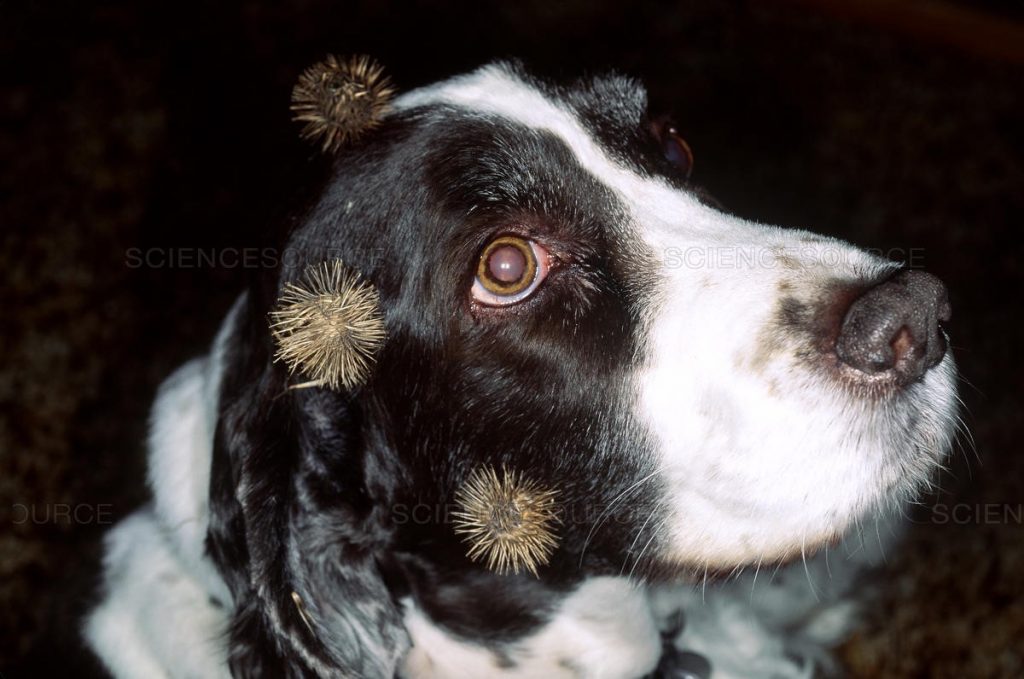
Who knew that walking your dog could help make the world a more “secure” place, and one day provide encouragement for people in the midst of a pandemic?
Swiss engineer George De Mestrel had no such expectations back in 1948 when he and his dog emerged from the woods covered with cockleburs, those spiky seeds that hitch rides on canine fur and human clothing.
Engineers approach life with an innate curiosity. Instead of pitching the burrs into the wastebasket, De Mestrel examined a few of them closely. How do these things work?
Peering through a microscope, De Mestrel discovered that each burr had thousands of tiny hooks that grabbed onto anything within close range.
He began to wonder: Could he create a two-sided fastener with similar properties?
De Mestrel spent the next eight years staring at matted dog hair under his microscope (and who wouldn’t want to do that?) and ultimately obtained a patent for a product he described with these words: “Special napped piles of man-made material with some of these loops having the means of hooking near their ends.”
Or as we know it today: Velcro, De Mestrel’s hybrid of the two French words “velour” and “crochet.”
This cocklebur-inspired invention has proven to be stunningly versatile. With 300 tiny nylon hooks per square inch, Velcro has been used to “tie” our kids’ shoes, anchor the ballpoint pen at the bank, secure loose objects in zero gravity in outer space, and revolutionize surgery – as evidenced by the fact that the two pumping chambers of the original Jarvik 7-70 artificial heart were fastened by Velcro.
Not to mention the sheer joy of “sticking the landing” on a vertical wall while wearing a Velcro Spiderman suit.
Now, if only we could figure out a way to keep people attached to each other – something that’s been more challenging than ever during the summer of 2020.
God has proposed just such a way: “Serve one another humbly in love” (Galatians 5:13). What might that look like?
A therapist asked a client if he knew the point at which his marriage of several decades had begun to unravel. “It was when she stopped putting toothpaste on my toothbrush in the morning.” Ever since their honeymoon, this couple had practiced a simple ritual of dental companionship: Whoever got up first squeezed toothpaste onto the other’s brush. But then came the day when life became, “I’ve got mine, you take care of yours.”
Love usually comes down to doing the little things.
A friend sends an email to a friend on a tough anniversary: “Just want you to know you’re on my heart today.” A woman, noticing the shopper ahead of her is clearly struggling to make ends meet, tells the store clerk, “Please put her groceries on my VISA card.”
A businessman drops a note to the woman who taught him high school English 30 years ago: Thank you. A daughter calls her mom every day – not because there’s anything new to talk about, but just to check in. A friend goes on Amazon and buys his pal some gear emblazoned with the logo of his favorite NFL team. Just because it’s a neat thing to do.
One of life’s great secrets is incredibly simple: The more you are attentive to someone else’s interests and needs, including their humblest hopes and fears, the more you will feel love for them. And the more they will feel deeply loved.
And the more we will be able to stick together, even when we’re miles apart.
That’s the magic of Relational Velcro.
